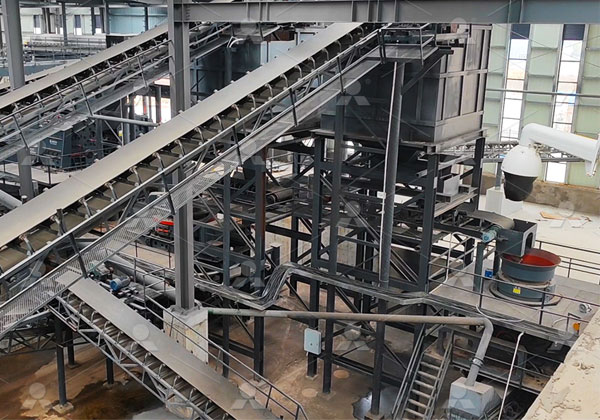Iron ore beneficiation refers to the process of extracting iron ore from its raw ore and preparing it for use in various industries. The beneficiation process typically involves crushing, screening, washing, magnetic separation, and gravity separation to remove impurities and improve the concentration of iron ore. Below is describing the iron ore beneficiation process in Pakistan.
Iron ore is an essential raw material for various industries, including steel production, construction, and manufacturing. In Pakistan, iron ore deposits are found in several regions, with the largest being located in Balochistan and Khyber Pakhtunkhwa. The beneficiation of iron ore in Pakistan is vital for meeting domestic demand and enhancing the country’s industrial growth. This flow chart will outline the step-by-step process involved in iron ore beneficiation in Pakistan.

Mining and Crushing:
The first step in the beneficiation process is the extraction of iron ore from open-pit mines or underground mines. Large excavators and trucks are used to remove the ore from the ground. The extracted ore is then transported to the crushing plant, where it is crushed into smaller pieces to facilitate further processing.
Screening:
After crushing, the ore is passed through vibrating screens to separate it into different sizes. The screening process ensures that the ore meets the required size specifications for the subsequent beneficiation steps.
Washing:
In this stage, the crushed and screened ore is washed to remove clay, mud, and other impurities. Water is used to rinse the ore, and the resulting slurry is sent to settling ponds to allow the finer particles to settle down.
Magnetic Separation:
Magnetic separation is a crucial process in iron ore beneficiation. In this step, powerful magnets are used to separate magnetic minerals from non-magnetic ones. The ore is passed through a conveyor belt near the magnet, and the magnetic particles are attracted to the magnet, leaving behind the non-magnetic material.
Gravity Separation:
Gravity separation is employed to further concentrate the iron ore by exploiting differences in density. In this process, the crushed ore is fed into a dense media separator, where heavy media such as ferrosilicon is used to create a fluid with a specific density. The denser iron ore particles sink, while the lighter gangue materials float. This allows for the separation of high-grade iron ore from low-grade materials.
Flotation:
Flotation is a method used to separate minerals with different surface properties. In this step, chemicals and reagents are added to the ore slurry to create bubbles. The hydrophobic iron ore particles attach to the air bubbles, rising to the surface and forming a froth layer. The froth is then skimmed off, carrying the valuable iron ore concentrate.
Drying and Sintering:
The final iron ore concentrate obtained from the beneficiation process contains a high percentage of iron. To make it suitable for steelmaking, the concentrate is dried to reduce moisture content and then sintered. Sintering involves heating the concentrate to a high temperature, where the particles fuse together to form small lumps or pellets.
Iron ore beneficiation is a critical process that plays a significant role in unlocking the potential of iron ore reserves in Pakistan. Through the various beneficiation steps like crushing, screening, washing, magnetic separation, gravity separation, flotation, and sintering, the iron ore is transformed into a valuable concentrate suitable for use in steel production and other industries.
